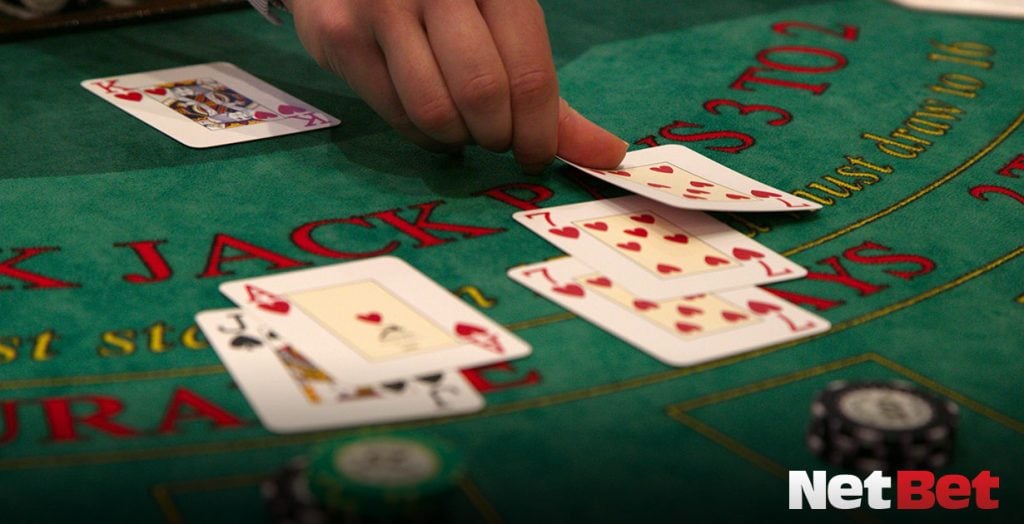
Blackjack has been a popular casino game since it was invented in the 1700s. Today, you can find many variations of the game both online and in brick and mortar establishments. When played using a strategy, the house edge of blackjack can be as low as 0.4%, so it’s no surprise that the game is popular worldwide.
If you’re a casino goer, you’ve probably heard blackjack be referred to as 21 from time to time. While many people assume blackjack and 21 are the same game, there are actually some key differences between the two. Here at NetBet, we explore what’s different between blackjack and 21.
What is Spanish 21?
So, is Spanish 21 the same as blackjack? The simple answer is no. Instead, it’s a variation of the game that can be found in online and land-based casinos. It’s actually one of the most popular variations out there, so is the game that many gamblers know and love.
To a newbie, Spanish 21 and blackjack may seem like the same game with a different name. However, there are several differences between the two including the rules and strategy and the odds of winning.
How to play Spanish 21
Spanish 21 is played with a shoe of six decks. Each player is dealt two cards and continues to receive cards until they decide to stand. Of course, the aim of the game is to get as close to 21 as possible without going over it. If you go over 21, you go bust. When all players have decided to stand, the hands are compared and the highest one wins the round.
In Spanish 21, players can split their paired cards and continue the game with two hands. If the player is dealt another pair, a re-split is possible. A winning hand in Spanish 21 pays 1/1.
Spanish 21 rules
Late surrender – in Spanish 21, late surrender is allowed. If the dealer does not have a blackjack, the player can choose to surrender and be given back half of their bet. Once this decision has been made, the player is out of the game.
Double after split – in Spanish 21, a double after split is allowed. If the player has two cards of the same value, they may split them into two different hands. They can then double their bet.
Re-splitting aces – in Spanish 21, re-splitting aces is allowed. Players can also split up to four hands.
Player 21 always wins – one of the main advantages to Spanish 21 is that a player 21 always wins. In standard blackjack, the dealer can beat a 21 if he has fewer cards than the player.
Double on any number of cards – in Spanish 21, the player may double on any number of cards.
Hit and double down – in Spanish 21, the player can hit and double down after splitting aces.
Surrender after doubling – in Spanish 21, there’s something called a “double down rescue”. This is where the player forfeits an amount equal to his or her original bet after doubling.

What is the difference between blackjack and 21?
So, let’s look at what’s different between blackjack and 21. One of the major differences is the missing 10s – in Spanish 21, all of the 10 cards are removed from the deck. This means that players’ hands are usually made up of lots of low cards.
Another thing that’s different between blackjack and 21 is the side bets. In traditional blackjack, the options for side bets are limited. The most players can do is take an insurance bet against the house getting a blackjack. This bet pays 2/1.
Spanish 21, on the other hand, has a wide range of side bets. The insurance is still available, paying the same 2/1. Other side bets in Spanish 21 include 5-card hand which pays 3/2, 6-card hand which pays 2/1, 7-card hand which pays 3/1, 21 with any three sevens which pays 3/2, 21 with 6-7-8 which pays 3/2, 21 with three sevens of the same suit which pays 2/1 and 21 with three sevens, dealer has fourth seven pays 50/1.
Another thing that’s different between blackjack and 21 is that in Spanish 21, a player 21 always wins. This means that if both the player and the dealer have blackjack, the player will win the round. In traditional blackjack, if both the player and the dealer hit 21 with the same number of cards, no bets are paid out.
Spanish 21 odds vs blackjack
The odds are also different between blackjack and 21. As the dealer stands on a soft 17 in traditional blackjack, the house edge is only 0.4%. In Spanish 21, on the other hand, the dealer is required to hit on a soft 12. This increases the house edge to around 0.8%. This is definitely something to bear in mind when deciding which variant to play.
Rules and Strategy
The strategy is also different between blackjack and 21. In traditional blackjack, it’s quite common for players to place an insurance bet. This pays out 2/1 and protects their money if the dealer hits blackjack. In Spanish 21, insurance bets are less common. While the bet still pays 2/1, the dealer is less likely to hit blackjack and there are no 10s in the deck. For this reason, most players decide that it’s worth just taking a risk.
While traditional blackjack doesn’t have many side bets, side bets are the key to winning in Spanish 21. In Spanish 21, the low cards are your friend. With 5-card and 6-card hands offering a 3/2 and 2/1 payout respectively, it’s a good idea to split low pairs and continue with two separate hands. This gives you a high chance of winning the bonus payouts.
While the games are certainly similar, it’s important to consider the pros and cons of each before deciding which one to play. Ready to try the games for yourself? Great! At NetBet, we have a wide range of blackjack, roulette, and slots for you to enjoy.



